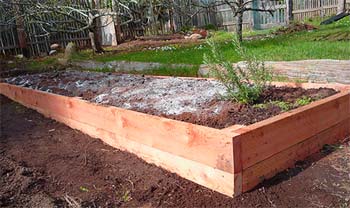 By Helen Brady, President, Friends of Hilltop Hanover Farm and Environmental Center
By Helen Brady, President, Friends of Hilltop Hanover Farm and Environmental Center
The receipt of a generous grant from the Community Catalyst Fund allowed the Friends of Hilltop Hanover Farm and Environmental Center, Inc. buy the necessary vegetable seeds, soil amendments and supplies to plant our first Community Supported Agriculture program.
Hilltop Hanover Farm and Environmental Center, Yorktown Heights, NY, is a regional education center that offers programs on healthy and sustainable food production, and teaches skills for small-scale suburban and urban farming, illustrating sustainable living practices for regional and local communities. The farm features demonstration models for backyard farming, rainwater harvesting, composting, and green-roof technology. Visitors can hike the farm’s 3.5 miles of woodland trails; picnic on the farm grounds; buy a CSA share, purchase produce from a farm stand and at U-Pick; or attend numerous classes and lectures. The Farm offers tours, classes and field trips to school groups, garden clubs, and scout troops, with specific emphasis on agricultural preservation, drinking water protection, and the promotion of environmental stewardship. The farm is open to the public, harnessed 1,700 volunteer hours in 2010, and donated 4 tons (est. value $18,000) of produce to regional food pantries.

Purchased in 2003 by Westchester County for watershed protection, and agricultural education, due to budgetary constraints within the County the Farm lost 50% of its funding for the fiscal year 2011, the loss of funding eliminated the budget for seasonal employees and horticultural supplies. To save and support the Center, the Friends group was established in June 2010, with the goal of fully funding and operating the Farm. The Friends is working cooperatively with Westchester County to reach the goal within three years.
The $3,000 grant towards seeds, soil amendments and supplies was the “seed money” that allowed us to start a Community Agriculture Share (CSA) program of 100 members. A CSA affords farm customers the opportunity to become farm supporters by committing before the growing season to buy a share of the farm’s produce, in our case members receive 20 weeks of vegetables from June to October. This arrangement helps the farm better plan for the season, particularly in the area of staffing. Through the sale of CSA memberships the Friends raised over $60,000, critical income for 2011. With the income we hired 6 local seasonal staff, and provided needed working capital.
It is clear that the financial return on investment for this grant is outstanding, but it is equally important to highlight the impact the grant has had within the community; local food, local involvement, and local jobs at a Farm that teaches sustainability.
Thank you Community Catalyst Fund.









 by Adam Markham,
by Adam Markham,